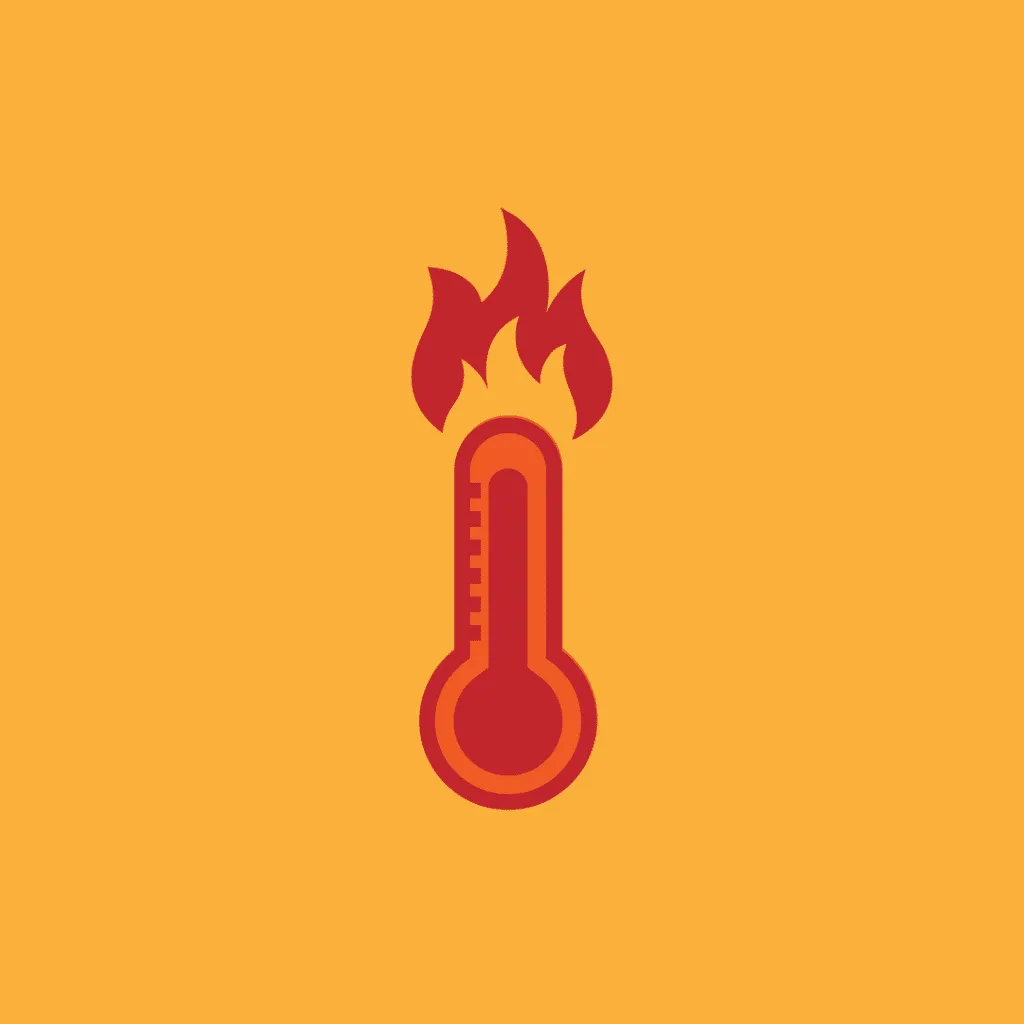Heat: How to Prevent Sudden Death

HEAT AND HYDRATION
Exertional Heat Stroke (EHS) is one of the 4 leading causes of sudden death in athletics. This is particularly alarming because EHS is 100% preventable and 100% treatable. This page will lay out the causes, risk factors, methods of prevention and care.
Signs and Symptoms of Heat Related Illnesses
Heat Exhaustion
Heat exhaustion is the inability to continue exercise in the heat due to cardiovascular insufficiency and energy depletion that may or may not be associated with physical collapse. This is the most common heat-related condition in active populations.
> Fatigue
> Nausea
> Fainting
> Weakness
> Vomiting
> Dizziness/Light-headedness
> Pale
> Chills
> Diarrhea
> Heavy Sweating
> Decreased urine output/dehydration
> Irritability
> Headache
> Sodium Loss
> Decreased blood pressure
> Decreased muscle coordination
> Hyperventilation
> Core body temperature between 96.8-105°F – Rectal temp
Heat Stroke
Heat stroke occurs when the body becomes unable to control its temperature. While similar symptoms exist between Heat Stroke and Heat Exhaustion, Heat Stroke is differentiated by an altered mental status. This is the most serious heat-related illness.
> Rectal temperature greater than 105°F
> Irrational behavior, irritability, emotional instability
> Altered consciousness, coma
> Disorientation or dizziness
> Headache
> Confusion/Appear “out of it”
> Nausea or vomiting
> Diarrhea
> Muscle cramps, loss of muscle function, inability to walk
> Collapse, staggering
> Profuse sweating***
> Decreasing performance or weakness
> Dehydration, dry mouth, thirst
> Rapid pulse, low blood pressure, quick breathing
Best Practices for Preventing Exertional Heat Illnesses
HYDRATION
Encourage athletes and participants to adequately hydrate, at least 48 hours before the start of activity.
ACCLIMITIZATION
Gradually increase exposure to higher temperatures over a prolonged period of time (e.g., two weeks) to help your body build a tolerance.
FREQUENT BREAKS
Schedule regular rest periods during practices and games to allow athletes time to lower their core body temperature.
PROPER CLOTHING
Wear lightweight, breathable and fabrics that allow you to sweat. This will help your body regulate your core temperature.
MONITOR WBGT
It is not simply the temperature on the turf, or the “feels like” temperature in the air. EHI happen when the body is not able to cool itself down. Monitor the wet-bulb globe temperature readings and adjust activities.
COOLING STATIONS
Provide shaded areas and cooling fans for athletes during breaks. Depending on your the WBGT and in accordance with your athletic trainers recommendations, consider having baby pools and ice baths at the ready.
EDUCATION
Train your coaches, staff and athletes on recognizing the EHI symptoms listed above.
PREPARE
Go4 offers plenty of heat and hydration related guidance for XYAGDSA – click the banner below to gain access to hydration and heat illness prevention resources. They’re perfect for parents, coaches, players, athletic trainers and admins.

Wet Bulb Globe Temperature
“Heat index” or “feels like” temperatures are phrases commonly used online or by weather forecasters daily. But they are not the most accurate or reliable measurements of hot weather.
These measurements are unreliable in measuring dangerous heat levels. They do not account for the factors that affect our body’s ability to cool itself.
As we begin to exercise, there is a portion of the brain called the “hypothalamus” that controls our sweat mechanism. When our hypothalamus begins to sense an increase in core body temperature, we begin to sweat. As the sweat begins to evaporate, our body temperature decreases through the process of evaporative cooling. Our bodies cool at different rates depending upon the conditions surrounding us and factors that are specific to the individual.
Because we rely on evaporation to cool ourselves off, factors such as humidity, wind speed, solar radiation and ambient air temperature all affect how quickly and efficiently we can lower our body temperatures.
Wet Bulb Globe Temperature is the gold standard for assessing if it is too hot to play.
FAQs on Heat Illness
What is exertional heat illness?
EHI includes a spectrum of conditions, from heat cramps to heat exhaustion and heatstroke, caused by prolonged physical activity in hot conditions.
What’s the difference between heat exhaustion and heatstroke?
Heat exhaustion is less severe and involves symptoms like heavy sweating and weakness, while heatstroke is a medical emergency characterized by a high body temperature and altered mental state.
How quickly can heat illness develop?
EHI can develop rapidly, especially in hot and humid environments, sometimes within minutes.
What should I do if an athlete shows signs of EHI?
Immediately remove the athlete from play, cool them down, and seek medical assistance if symptoms persist or worsen. With your athletic trainer, follow the treatment protocols listed above.
Is Exertional Heat Illness Avoidable?
Yes, with proper education, hydration, acclimatization, and monitoring, the risk of EHI can be significantly reduced.